https://www.youtube.com/watch?v=fB4VDwbSu80
How To Grow Perfect Lettuce Every Time! 🥬
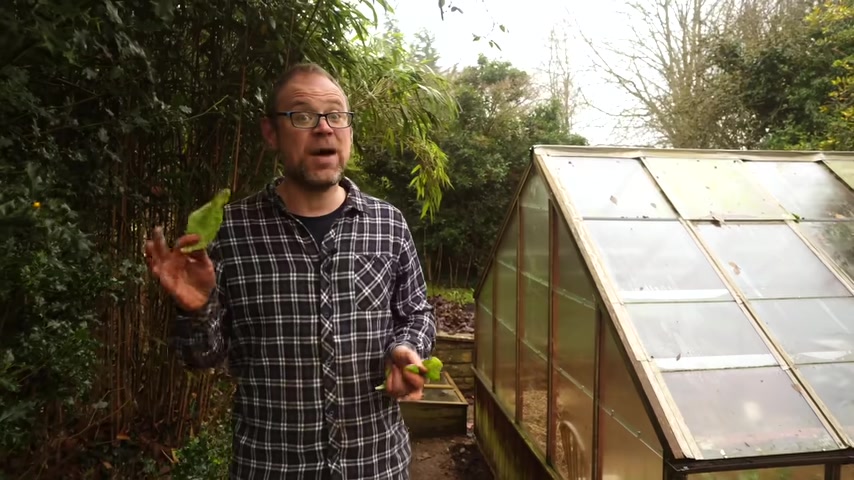
If you haven't tasted fresh homegrown lettuces , you're missing out .
In fact , lettuces offer fresh leaves for picking almost year round .
It's a great crop for beginner gardeners , but there are a few tips you'll need to bear in mind for the healthiest plants .
Hi , I'm Ben .
And if you're a salad nut like me and want to up your lettuce growing game , you've come to the right place because here come my top tips for growing perfect lettuce every time .
Mm so lettuces are a cold season crop , which means , actually , you can get on and sow them nice and early .
They prefer a moisture retentive fertile soil so you can improve your soil simply by adding plenty of well rotted organic matter , such as compost in the weeks before sowing and sowing , direct outside commences about four weeks before your last frost date .
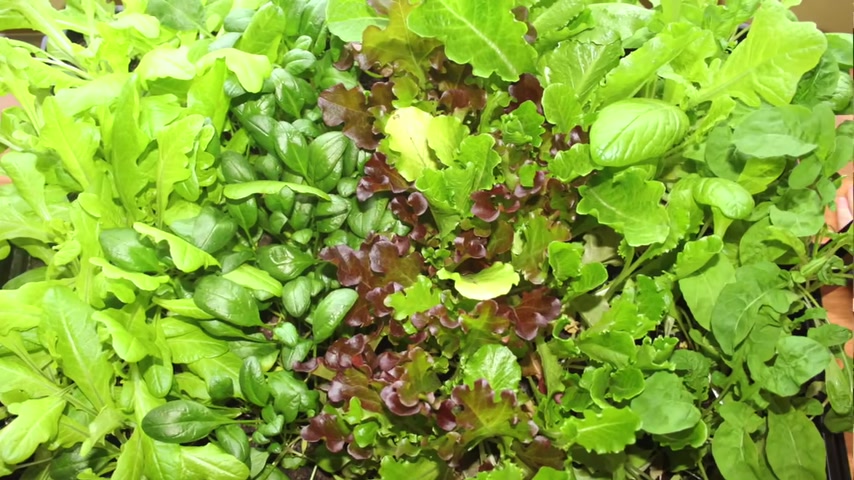
If you want to get on and start them a bit earlier like I do , then you can start them off indoors or undercover in a greenhouse cold frame or hoop house , for example , if possible , grow them under some grow lights .
If it's very gloomy , like it is here , that's very important in the winter because there simply isn't enough strong light to get them off to a great start .
So let's sew them .
I'm using just a normal multipurpose potting mix and filling up my pots , and I'm sewing into pots like this , so I can , uh , well , they take up less less room like this , and then I can , uh , transplant them into their own little plugs once they've germinated , and I'm scattering a very scant pinch of seeds over the surface like that .
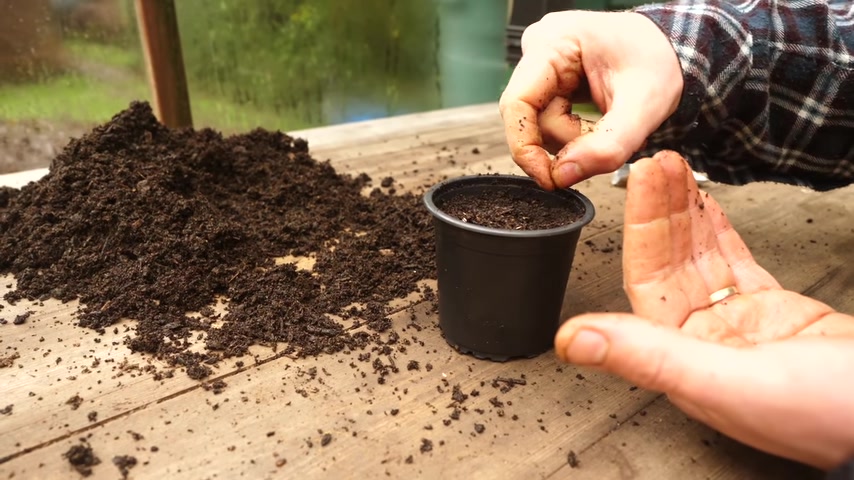
Space them out if I can , because it means you can let them grow on a bit longer in the pot before they go into their own little plugs or pots and then to cover them over just the merest suggestion of potting mix about a quarter inch or half a centimetre , just enough just to cover them so they're out of the light .
Or you could just cover them with a bit of pearl light or vermiculite as well .
That would work just as well and just gently firm that in .
And then give that a little water .
These will be going under grow lights .
Uh , once they've germinated , I'll be germinating them inside with a little bit of warmth , and then once they've got a bit bigger and then towards the end of winter , they'll come out into the greenhouse .
Now , I'd like to show you some that I sewed only one week ago , which are now ready to transplant into plug trays .
So let's do that .
So these guys were germinated literally seven days ago , and they put on good growth .
They were germinated inside on a window sill , so you can see they're leaning to one side .
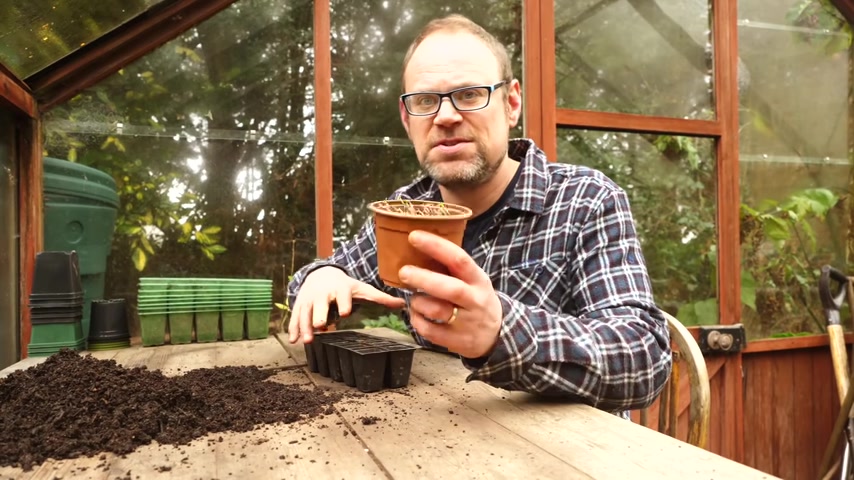
So now's the time to get these into their own plug trays and then have them onto the grow light so they can firm up .
So start by filling our plug tray .
And again , I'm simply using multipurpose compost .
Tamp it down and my trusty little stick here to help gonna carefully ease them out of the pot .
Probably just take about half of these .
And then , if you can get as much of the original potting mix as you can and then just , uh , pop , poke them in like that , there we are .
You can set them a little bit lower than they are here to help support them , so this one's come out with none of its original potting mix .
But you can see the long tap root there .
Try and feed that down carefully , as much as possible and then down .
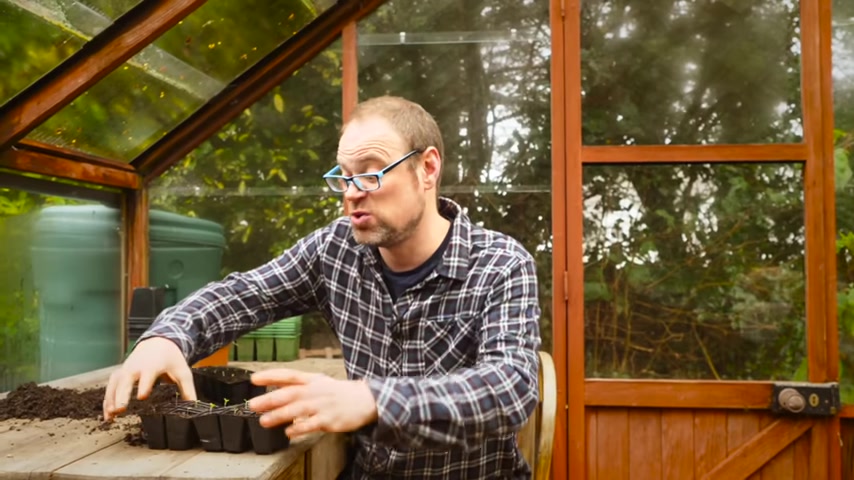
So it's somewhat supported , and these are very , very delicate seedlings , but very , very resilient , too .
So as long as you don't damage the main brutal stem , they'll do just fine for you .
So they're all transplanted now into plug trays , and I wanted to show you this one , which is one I had transplanted one week ago .
These were watered , they all flattened down .
They sprung back up the next day , and I've grown them on , so it shows you how quickly they can .
Um , they can bulk out , and that's in this cooler weather .
So once they've filled their plug trays , they're good to go outside .
And at the start of the season , you can help them along by covering individual plants with bottomless um , milk bottles , for example , or clear plastic bottles or just simply spreading out a road cover of fleece like that just to keep the chill off .
And to help them acclimatise , they'll be planted 9 to 12 inches that's say 23 to 30 centimetres apart .
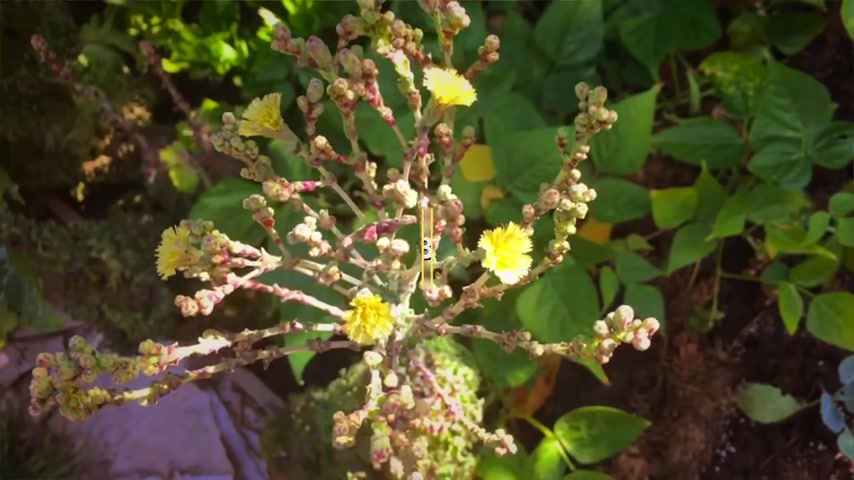
in both directions to give them plenty of room .
Then I'll make further sewings every three or four weeks as necessary .
The big problem comes in midsummer with the heat , but more on that in a minute .
Bolting is simply the fancy word for when crops flower prematurely before you've had a chance to harvest them .
In most cases , this renders the crop inedible .
And that's certainly the case with lettuces , whose leaves become tough .
And it also produces a truly wince inducing , bitter milky sap .
At this point , lettuces are good for one thing only , and that's digging up and adding to the compost pile .
Lettuces are cool season crops and cannot stand hot , dry weather , and this is often what causes them to bolt .
So keep your lettuces well watered in dry , hot weather .
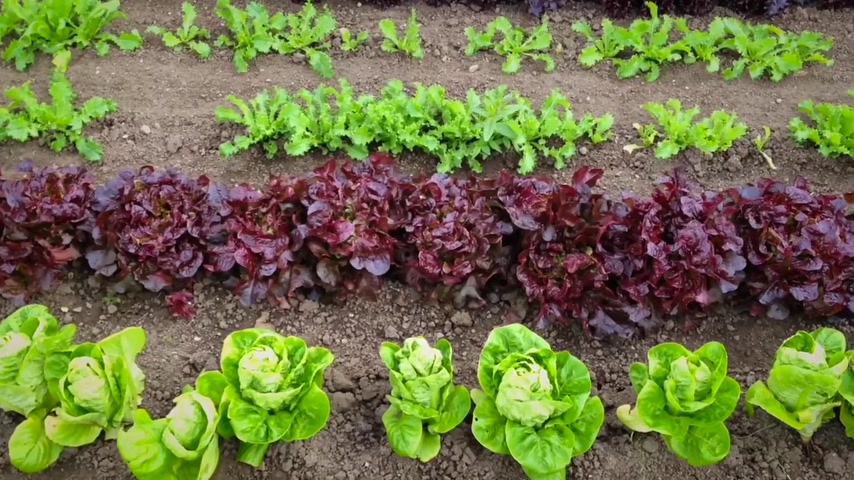
You can also try growing them in shade , either by rigging up some shade cloth or by growing them in the shade of taller crops like , say , tomatoes , corn or climbing beans .
Also keep the area around your lettuces well weeded , so there's less competition for available soil moisture .
Germination can also be a bit erratic in hot weather , and there are two ways around this one .
You simply germinate your lettuces indoors , especially if you've got air conditioning in a hot climate , say , and then once they've germinated , then plant them outside .
The other option , which is what I do , is to simply make your drill to sew them into and then water along it .
Let it drain water along it again and then sow your seeds and then fill them over .
And that way you've got a nice , cool , wet cushion around your seeds to help them germinate .
Lettuces are generally pretty trouble free , but there are two arch nemesis that might hamper your efforts if they're left to get away with it .
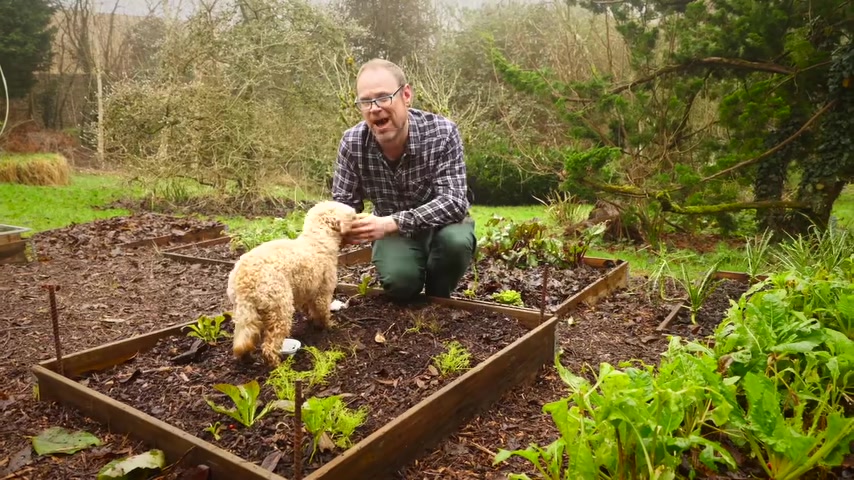
Slugs and aphids Let's tackle those horrid slugs .
First of all , now , how often have you got your lettuce leaves in , only to discover that there are holes munched into them .
And there's a great big slug under there that's happened to me on more than one occasion , and it's not very nice , is it ?
So this is what I do now is I set up slug traps .
I simply sink a shallow tray or pot like this .
This is a rain into the ground at ground level and then fill it up with beer .
The slugs love the stuff .
They go into the slug traps , they drown , and they come to a sticky but probably quite happy ending .
And then you need to empty them out and refill regularly .
You don't need to use expensive beer .
Doesn't need enough to be alcoholic , but it is important that you check them and empty them regularly .
Other ways to keep slugs in check are to make sure they're properly spaced .
Remove all those weeds and any bits of debris lying around so there aren't any hiding places for them .
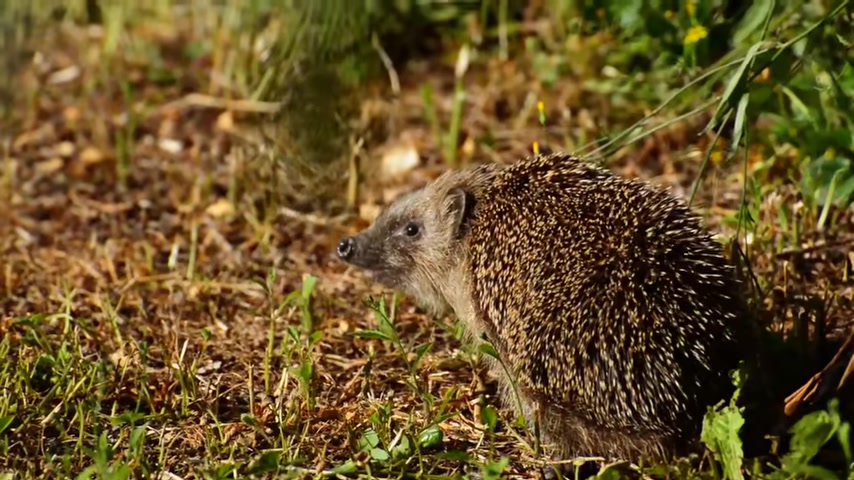
And do check any lurking places that there might be and pick out any slugs you find .
The great thing about going out and seeking slugs and these beer slug traps is that they won't harm any other wildlife .
It's controlling pests , naturally working with nature and not leaving a footprint on the land .
And I think that's really important Now .
The other common pest of lettuces is aphids , and the best way to control any aphids .
Whether that's black bean aphid , woolly aphid or rose aphid in the case of lettuces , is to attract their predators , things like hoverflies lace wings , lady birds or lady bugs and tiny , non stinging parasitic wasps .
The best flower for that , in the case of lettuces , is Alison .
Alison is a beautiful , sweet , perfumed annual flower that attracts the parasitic wasps and hoverflies .
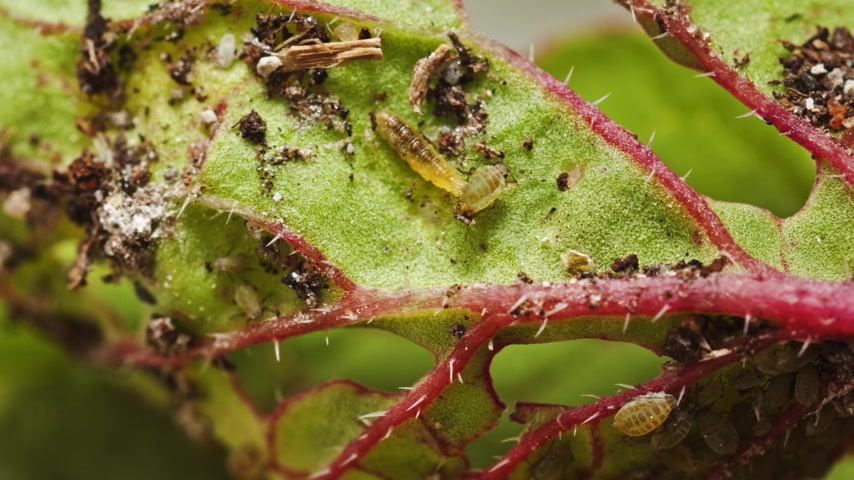
The hoverflies are attracted to the nectar , and then they lay their eggs , and it's the larvae that then go on to eat the aphids in prodigious quantities .
Now organic growers in California often grow allium amongst their lettuces , growing as much as 10% of their surface area for Alice versus lettuce to help with pest control .
And that's something I think I will try this coming growing season .
There are lots of other plants that will attract beneficial bugs like this calea poached egg plant and zinia , for example , and it's really good practise to grow them in amongst your vegetables .
For this reason , companion planting like this is actually the topic of our next video .
So if you like the sound of that , then do keep your eyes peeled or turn on notifications .
Now , when it comes to harvesting your lettuces , you've got two broad types .
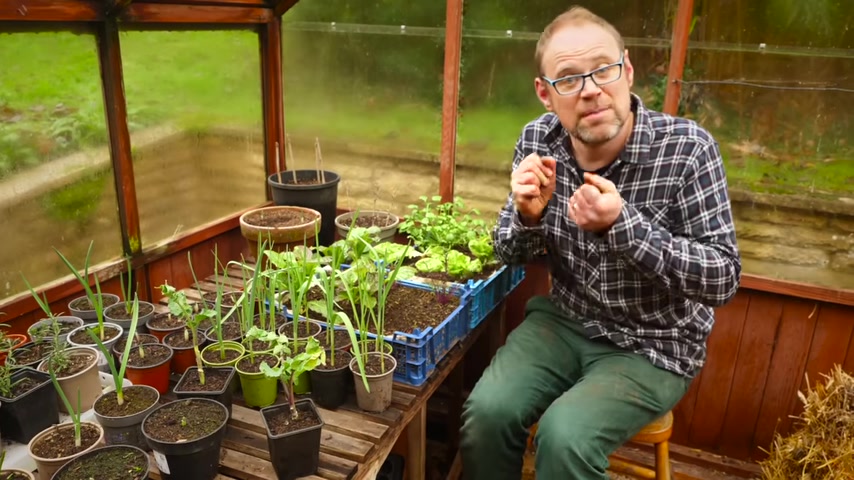
Loose leaf lettuces , which don't form a tight , close knit head , and head forming lettuces that do , and both require slightly different harvesting techniques .
Now , with loose leaf lettuces , you can just cut them at the base and harvest the whole head .
But a more smarter way to harvest them , perhaps , is to harvest individual leaves at a time , taking them from the outside of the of the cluster and leaving the central ones to grow on .
Now these have been overwintered these lettuces , and I'll just demonstrate that just click them off between your finger , your forefinger and your thumb like that .
And then you've got enough of the central Rosetta leaves to grow on , and those will grow bigger and then you'll take them from the outside again .
Now , with head forming lettuces , you simply pull up the entire plant or cut it off at the base .
But another clever way is to take off a few of the outer leaves while the plant is still quite young .
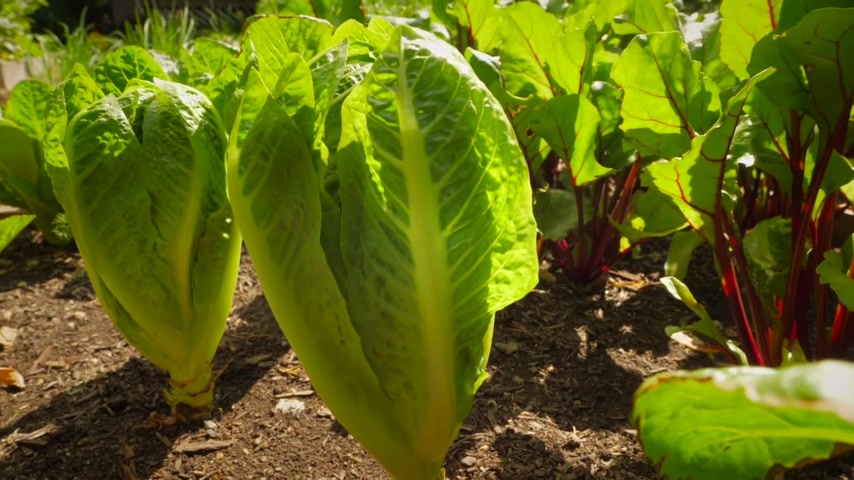
And then , once you've done that a few times , leave the plant to grow on and produce that nice fulls .
Some head .
Don't leave it too long to harvest your heading lettuces .
Otherwise the leaves will become quite tough .
So once you've harvested your leaves , especially in the summer .
You want to plunge them into a bucket or sink of cold water , and this serves two purposes .
One .
It washes the leaves so it gets rid of any residual bits of soil or grits .
And secondly , in the heat of summer , it cools the leaves down , and that's important so they don't go all floppy .
Once they've soaked for at least 5 to 10 minutes , you can lift them out and then flick them dry like that , or even better , use a salad spinner , then simply pack the leaves into plastic bags , roll them over and then pop them into the salad compartment of your refrigerator , where they should stay fairly fresh for up to a week .
I'm going to be growing .
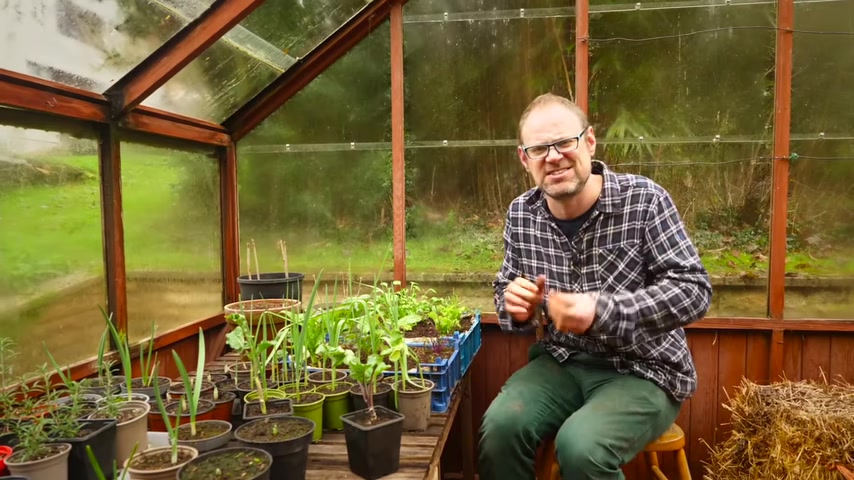
Some remain lettuces this year , which form the basis to a really delicious salad , as well as some salad bowl types , which almost grow like weeds .
I tell you now , what lettuces do you fancy growing this year ?
Tell me in the comments below , you might also like to check out our video on growing winter salads like these for more tips on growing lettuces year round .
Don't miss out on that one .
And in fact , we've got loads of great content coming up on all sorts of vegetables , fruits and herbs .
So if you're new here today , don't be shy .
Subscribing and please do turn on notifications so you don't miss out .
I will catch you next time .
Are you looking for a way to reach a wider audience and get more views on your videos?
Our innovative video to text transcribing service can help you do just that.
We provide accurate transcriptions of your videos along with visual content that will help you attract new viewers and keep them engaged. Plus, our data analytics and ad campaign tools can help you monetize your content and maximize your revenue.
Let's partner up and take your video content to the next level!
Contact us today to learn more.